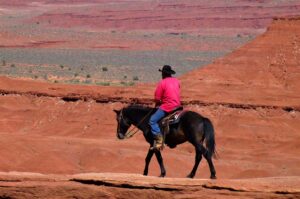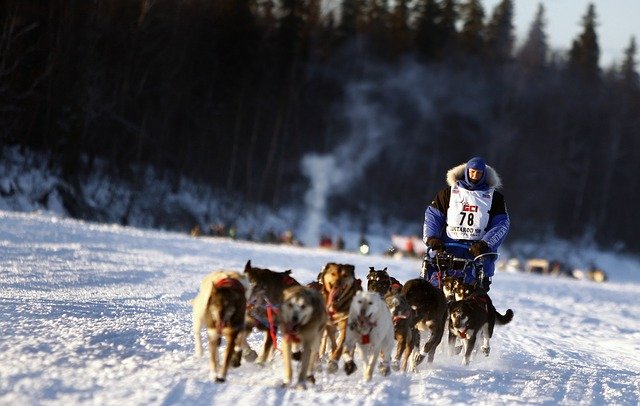 Characters in many genres, especially Fantasy and Historical Fiction, often travel by foot. Especially when time is part of the conflict, the author must have a clear idea of exactly how far apart everything is and how long it takes to get from one place to the next.
Characters in many genres, especially Fantasy and Historical Fiction, often travel by foot. Especially when time is part of the conflict, the author must have a clear idea of exactly how far apart everything is and how long it takes to get from one place to the next.
Note that many authors ignore this kind of detail completely. In many Fantasies, actual distances are never mentioned. However, it is useful for purposes of veracity and suspense to be able to use the time factor. Personally, I spend hours with maps and a calculator on all my books. Which is why I am passing this information on to you.
Variations to Consider
There are several different factors that impact the speed at which characters can cover distance:
1. Quality of horse/conditioning of human
2. Length of trip. You can sprint for two minutes, walk fast for two hours, pace all day, or trudge for two weeks.
3. Landscape: level or mountainous, treed or open
4. Road quality; pavement, wagon road, path, animal trail, trackless jungle.
5. Emotional situation. Is this an emergency? Life or death? How much does the character want to get to the objective? How mentally tough is he or she?
6. Luggage and weapons.
7. Temperature and available water.
8. Does the character change mounts during the ride?
All of these factors are great ways to increase suspense, because they impact the averages listed below, usually negatively.
These statistics are from varying sources. The modern data is mostly collected from recreational riders working in ideal conditions, so adapt accordingly. It is assumed that the horse is an appropriate size for its rider.
A. Humans Walking
Walking humans are easy. A person in good shape can walk at 4 miles (6 km) per hour and do 20 miles (30 km) a day on an extended journey. The numbers are rounded off, but it makes the arithmetic easy. Depending on the factors above, a desperate person can probably walk at a slower rate for 30 or 40 hours before total collapse.
 B. Horses
B. Horses
When we consider our four-footed friends, it’s much more complicated.
One Day’s Ride
Twenty to 30 miles (30 to 40 km) a day is a sustainable pace for an average horse. To do this, they trot part time, canter part time, walk part time, and take rest breaks.
One source suggests that a fit horse can do 40 to 50 miles (65 to 80 km) a day for 4 or 5 days before it needs a day off.
Endurance riders can do 100 miles (160 km) in 9-12 hrs. They trot and canter whole way
And then there’s those top professional riders, the Pony Express. The mail could travel 250 miles in 24 hours. A new horse every 10 miles, a new rider after 100 miles. Trail and weather conditions allowing, they galloped the full distance. Those guys were tough!
Speed
Walk: 4 miles (6 km) per hour. A horse can do this all day, but so can a man.
Trot: 8 to 12 miles (12 to 19 km) per hour. A horse can keep this up for several hours at a stretch. Problem: a trot is difficult to ride to, so the rider wears out first.
Canter: (English) or lope (Western): 12 to 15 miles (19 to 24 km) per hour. This is a comfortable travel gait, and eats up the miles.
Gallop: 25 to 30 miles (40 to 50 km) per hour. At a fast gallop, the horse can only do a couple of miles. The Pony Express horses averaged a 10-mile gallop before being replaced.
Terrain Differences
This is how American wagon trail surveyors spaced out their overnight rest stops, on the assumption that a horse or horse-drawn wagon could accomplish the distance in a day:
Every 20 miles in wooded or mountainous areas
30 in grasslands, scrub & low hills
40 in flatlands (panhandle, the coast)
50ish in West Texas or up north in Wyoming or Montana (with small villages and random cantinas occasionally thrown in around the 25-mile mark in Texas)
Anecdotal Evidence
One group on a journey averaged 24 miles per riding day for 58 riding days out of 165 days, on the road for about 6-10 hours most days. One day they covered 40 miles, but then rested two days.
Record run: 180 miles = 290 km in 3 days on one horse.
There is a recorded instance of a rider making it from Kiev, Ukraine, to Paris, France, a distance of 1400 miles (2,200 km) at an average of 100 kilometers a day, on 4 horses. Nobody says whether he rode every day.
In the Middle East, 26-mile races on horseback are completed in around an hour.
A Doggy Comparison
Check out the Iditarod sled dog race, 938 miles (1,510 km) long. The record time is 8 days, 4 hours, which averages out at 114 miles (183 km) a day!
Food Differences
Don’t forget grazing time. It is estimated that a horse spends 10 to 17 hours a day grazing, in 15 to 20 grazing periods. So you can’t go for 12 hours a day for many days, especially if the forage is poor.
If you carry grain, you can make lots more distance, because the horse has more energy and grazes less. Of course, it has to carry the grain…
Spring grass is nourishing.
Winter grass takes more grazing time and provides less energy.
How Much Veracity?
In the end, distances on horseback are much too complicated to succumb to simple arithmetic. If you’re looking for veracity, start with your trip, then find some anecdotal evidence that matches the data. If you just want to sound reasonable, use the table below and make sure you check your arithmetic.

Be Warned
Don’t get carried away with accuracy; it’s a never-ending spiral into complexity. If you give some readers a number, they’ll fixate on it for the rest of the book. In my Fantasy, “Cloud Cat,” the characters are on horseback almost every day in varying road and weather conditions and stages of battle fatigue. Before I had finished writing that novel, I had to reload the Calculator app on my phone. I kid you not.
And if You Really Want to Know…
Stanford University has a program called “Orbis” that will give you travel times for anywhere in the Roman Empire: http://orbis.stanford.edu. If you have time to learn how to use it.
The Bottom Line
None of this data is definitive. There are too many variables, and different sources disagree by wide margins. But the point in fiction writing is not to be super accurate but to be consistent. As long as your novel agrees with itself, your readers will be just fine with your numbers.

Thanks Gordon. This is something we authors need to be aware of. As you say with your “bottom line” consistency is the most important but even so we also need to be within the limitations of reality. You’ve made that easier.
While I doubt I’ll ever need to get this precise in a book, I agree that we writers need to be authentic and realistic, so this is good stuff to keep in a back pocket. When I first moved to Arizona, I thought it was curious that so many of the cities and towns were roughly a 2-hour drive from each other, or about 100 miles. One day I heard the explanation–that was the distance a stagecoach could cover in one day. Who knew?
Excellent information, Gordon, worth bookmarking — or remembering that it’s on Indies Unlimited.
Ignoring these details always makes me shake my head. Someone gets from one kingdom to another hundreds of miles away, and it seems to be instantaneous. What? Huh?
This should be very helpful to those who write with this type of transportation. In my first novel, I forgot to take time zones into account during airplane travel heading East and actually needed to add a day into the timeline. Luckily I caught it before it went to press, and now it’s something I try to always keep in mind. Storyboarding helps. Thanks for all your hard work with this information.
As I’m getting from everybody, it’s got to sound logical and be consistent. Amount of detail is up to the writer.
Great article. I hate reading books and watching movies where these factors are completely ignored.
Excellent information! I’m always aware of the time factor, but so far my calculations are more guesswork than anything else. Great to get some real data. Cheers!
A local Revolutionary war legend has a woman (60 years 0ld) riding 60 miles to warn her son of a Tory attack. The terrain is piedmont, rolling hills, a few streams or rivers from one point to the other, in the summer–just before full moon at night.
It takes an hour to drive this distance, and from what I can tell from old maps, there was no direct road, although she would have probably had to avoid roads. Since there is a possibility that she stole a horse somewhere along the journey, she could have had two horses.
My math says 12-hour ride, a very tough woman (she and her husband started a new farm after the war), average 5 miles an hour, seems reasonable if she could trot or canter a good bit of the way, and stop to rest, feed the horse, or let it graze. She has very strong emotional reason, and it probably was not her horse.
Doable? Once?
My data says a horse can do 30 miles a day in grasslands, scrub & low hills. which sounds like your terrain. So I’d go with the two horses option. This also removes the distraction of stopping to graze. It also puts the real conflict where it belongs: on the rider.
Any fit rider can make 48 miles in 12 hours at a walk, and come out with just sore muscles and a blistered butt. However, if you want to make more than that, you have to trot, and, as I pointed out above, trotting wears down the rider. So her problem is how to eke out her own stamina, walking and trotting. Depending on how much ink you want to spend on the ride and her feelings during it, you have set yourself up with a nice, difficult journey, the success of which all depends on the strength of will of the character.
If you need a bit of external conflict you can always add more difficult terrain.
Have fun!
This is invaluable information, Gordon, and something I personally hadn’t considered before. But knowing and understanding these basic facts is part of what lends credibility to any story – even if it is a fantasy tale.